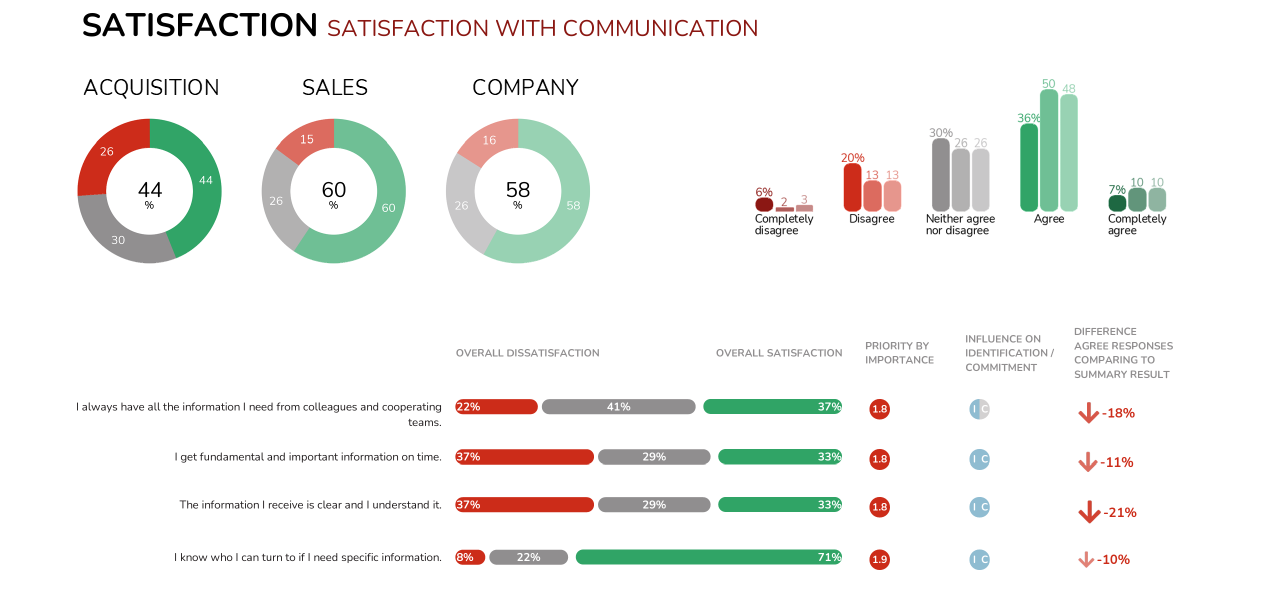Pavla Kaňková
+420 771 297 711
16. 09. 2025
External vs. internal comparisons, averages vs. percentiles, trends vs. absolute values — a benchmark can be a good servant but a bad master. When is it a useful tool, and when does it become a trap that distorts reality?
This article by Marta Fabiánová, Managing Director at TCC online, shows how to use benchmarks meaningfully in employee surveys, psychodiagnostics, and 360° feedback.

“How did our employee survey results compare to others?” is one of the first questions we hear from clients when presenting outputs. “Am I normal?” is a common reaction when discussing outputs from work-related psychodiagnostics. At TCC online, we’ve been working with data from employee surveys, work-related psychodiagnostics, and 360° feedback for many years. Whenever data is collected, everyone is simply interested in how they compare to the ‘norm’, which is understandable. And sometimes, it’s even essential.
Benchmarking provides exactly that — a comparison against a relevant reference value. Where does it make sense, where should it be taken with caution, and where is it not meaningful at all?
A benchmark can quickly reveal whether levels of satisfaction, engagement, or identification in a specific company are comparable to those in similar organizations. Comparing results to a benchmark can highlight the employer’s competitive strengths or weaknesses. A benchmark can also provide reassurance, showing that other companies may struggle in certain areas, too.
In employee surveys, both external and internal benchmarks can be useful. An external benchmark offers a comparison with other organizations and is most meaningful at the company-wide level. An internal benchmark compares the results of a specific team or department to the overall company results. In larger organizations, it may also include comparisons to a higher organizational unit and the entire company. For instance, an acquisition team may see its results in the context of the whole sales department and the company as a whole.
Managers can then see whether sentiment in their team differs from that in other teams. This helps identify whether certain strengths or issues are specific to their team or shared across the organization. Such comparisons are a helpful guide when defining focus areas and planning next steps.
Graph – External benchmark sample, source: TCC online

Graph – Internal benchmark sample, source: TCC online

In psychodiagnostic methods, benchmarking is essentially “built in” through standardization and psychometrics. Results are always compared to a norm — the distribution of a given trait within a certain population. Norms help identify pronounced characteristics of a person. Only then can you determine whether you’re a true introvert, or whether your level of structure, systematization, or need for autonomy is average or more extreme.
Clients occasionally ask about the possibility of benchmarking within the 360° feedback process. We strongly advise against external benchmarking, as comparing managers from different companies — with different teams and experiences — is essentially meaningless.
The goal of the 360° feedback is not to compare someone against an abstract database of managers, but to gather structured feedback from real colleagues and define development areas. It’s also about mapping individual progress over time. In this sense, each person becomes their own benchmark, because progress itself is what truly matters.
In highly competitive corporate cultures, internal benchmarking may be more appealing — for instance, COMPARING scores to those of the top-rated colleagues (e.g., top 25% or 10%). However, this only makes sense when there are enough participants in the 360° feedback process: ideally, several dozen. And only when such comparative elements don’t cause more harm than good. The developmental purpose of feedback can easily be overshadowed by the desire to “win.” Instead of reflection and openness, competition and defensiveness take over.
In surveys, we most often use average scores as benchmarks. Sometimes, benchmarks are presented in the form of upper quartiles, showing, for instance, the score achieved by the top 25% of companies.
In psychodiagnostics, norms always use percentiles (from the 0th to the 100th percentile). This doesn’t mean just “top 25%,” because when it comes to personality traits, more is not always better. For example, scoring in the 99th percentile for empathy might signal a remarkable ability to relate to others and perceive relational nuances — but it may also indicate a risk of hypersensitivity.
Cognitive (intelligence) tests form a specific category. We all know them — numerical, verbal, abstract reasoning, and others. In these, answers are objectively right or wrong, and a higher score places you in a higher percentile of the population, indicating stronger cognitive potential.
No benchmark in employee surveys is perfect. It always depends on which companies are included in the comparative data. It’s therefore important to ask how the benchmark was created.
Ideally, a benchmark for employee surveys should include data:
In psychodiagnostics, norms can be general or specific to factors like age or gender. What matters is that the reference group is meaningful — and most importantly, that high-quality norms actually exist. If a provider can’t or won’t share them transparently, it’s best to look elsewhere.
At TCC online, we focus on work-related psychodiagnostics and use norms based on the working adult population. We don’t differentiate by age or gender — even though we have that data — because our clients are looking for the most suitable candidates for a given position, not the best within a specific age group. Work-related psychodiagnostics should be free of labels and bias and should apply the same standard to everyone.
The golden rule when using benchmarks in employee surveys is to treat them as guidelines, not dogma. Pay attention to trends and notable differences rather than absolute numbers. Remember that a benchmark is a tool for interpreting and communicating data — not a “truth” about your company.
In psychodiagnostics, norms are the very foundation of the method. Only by comparing someone to a reference group can we understand how strongly they are profiled in a given area, where they may have significant advantages over others, and what they should watch out for or work on further.
In the 360° feedback, you don’t need to worry about benchmarking too much — it’s not the primary goal of the feedback.
A benchmark can be a great servant when we know when and how to use it. It helps put results in context, identify outliers, and stay on course. But just as important as comparison is understanding — of people, of data, and of the environment in which they operate.

14. 08. 2025
Corporate culture is not about mottos in hallways or colorful presentations at meetings. It shows in everyday situations: in communication,...
27. 06. 2025
Employee Surveys help you understand the company climate and catch what’s really going on in time. Comprehensive surveys provide deep...